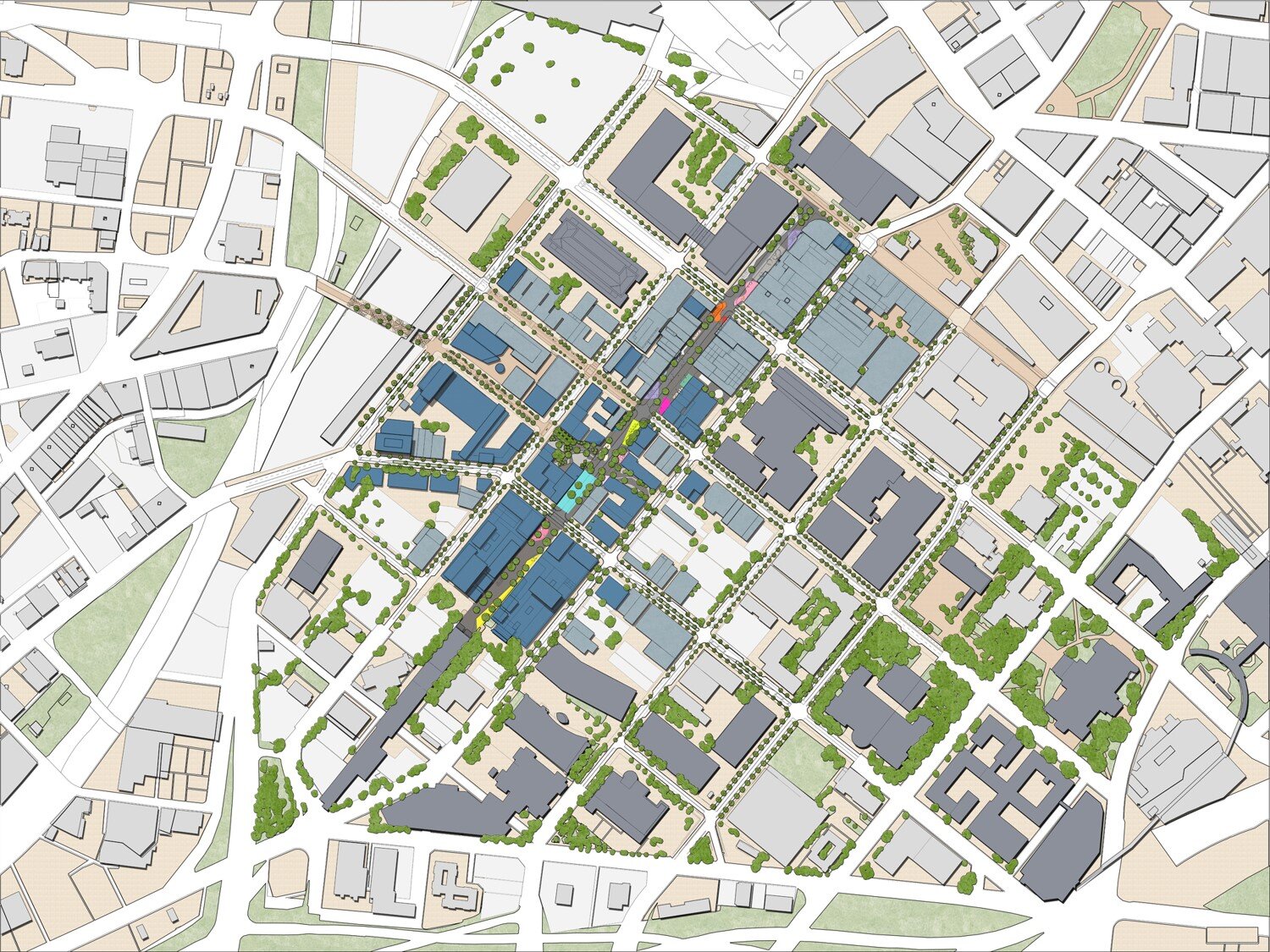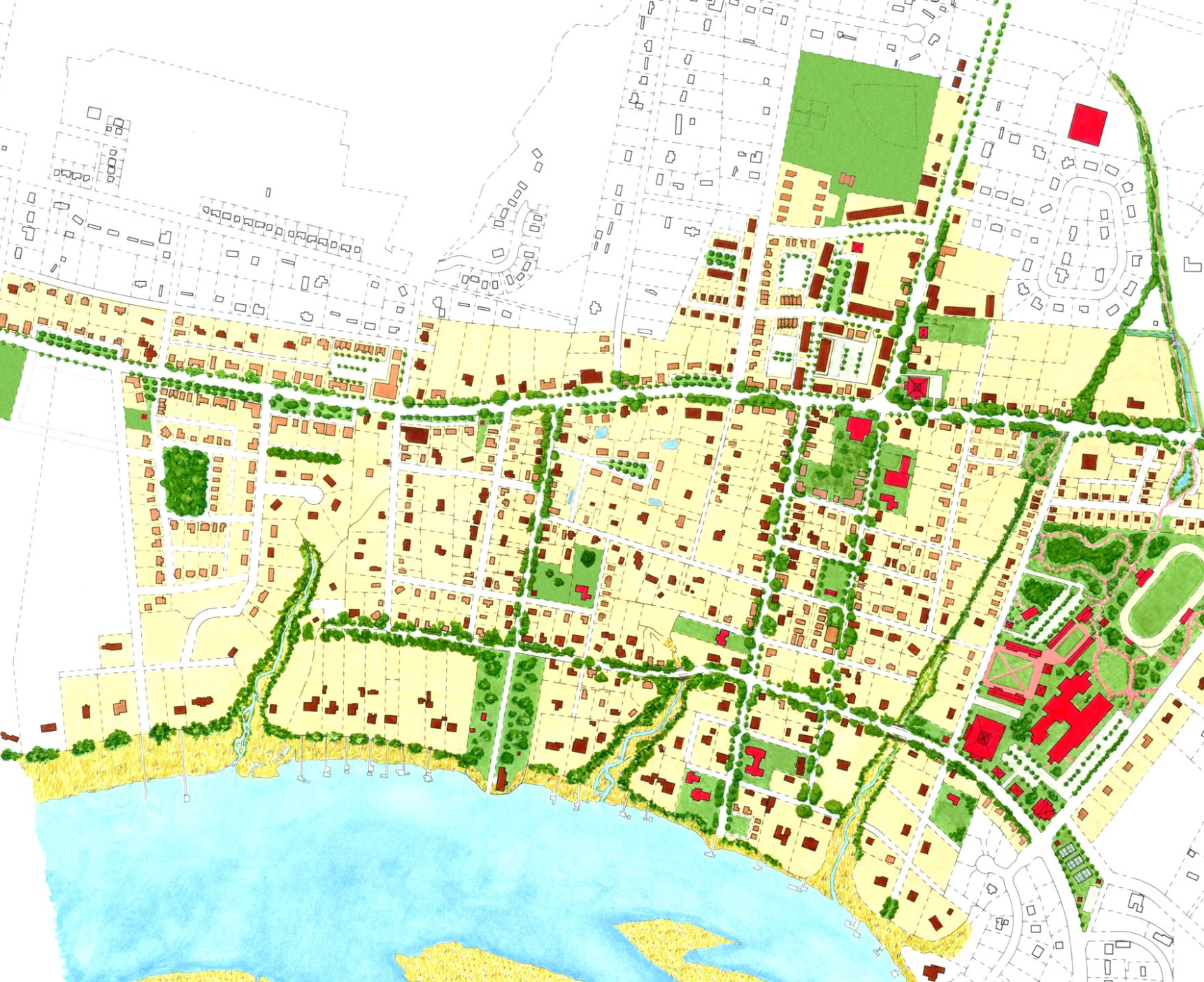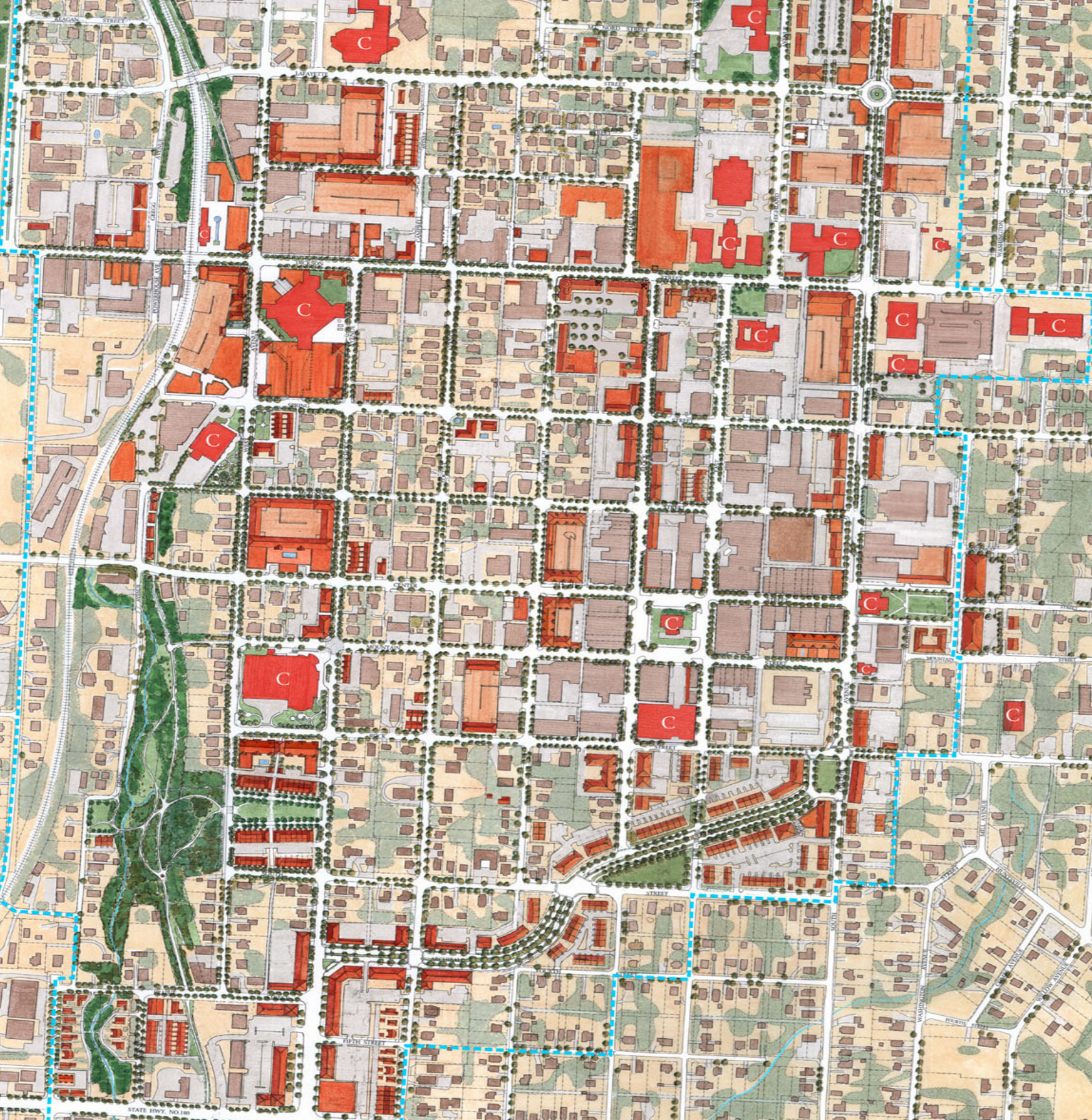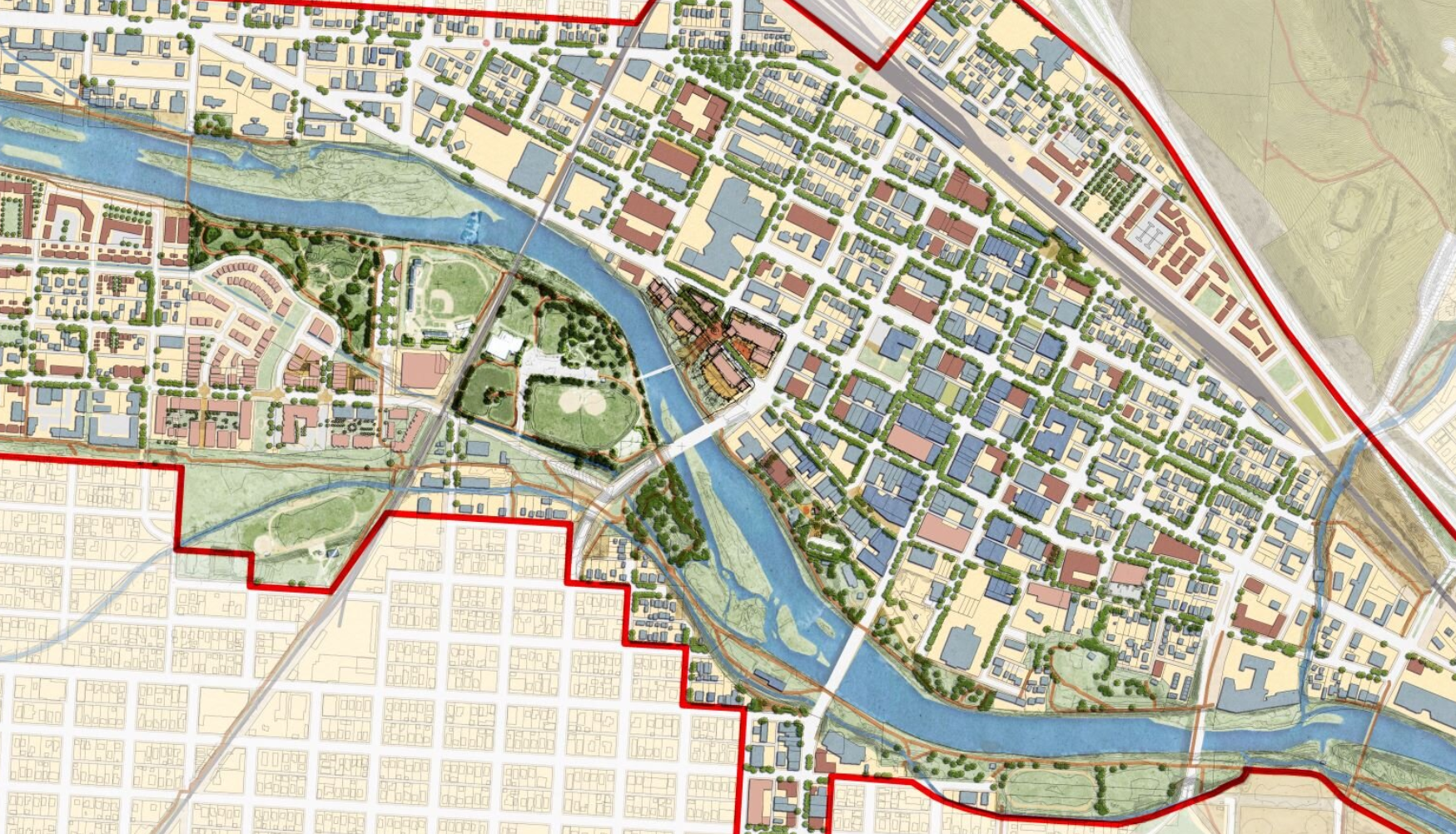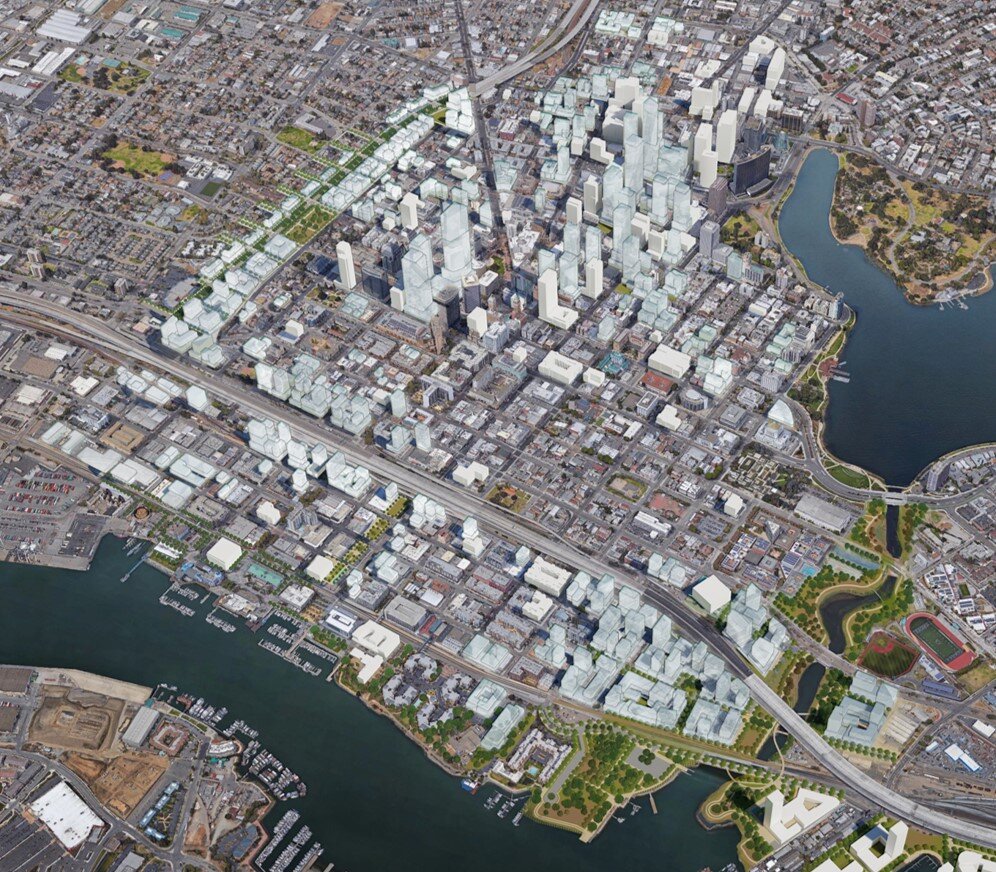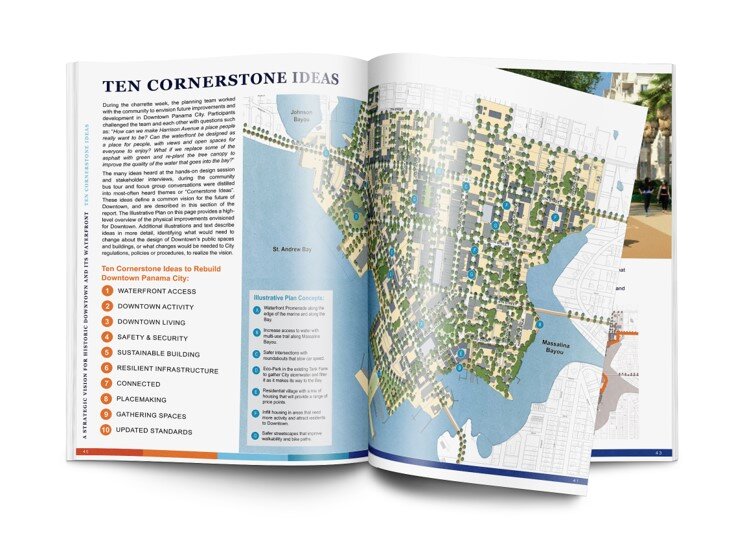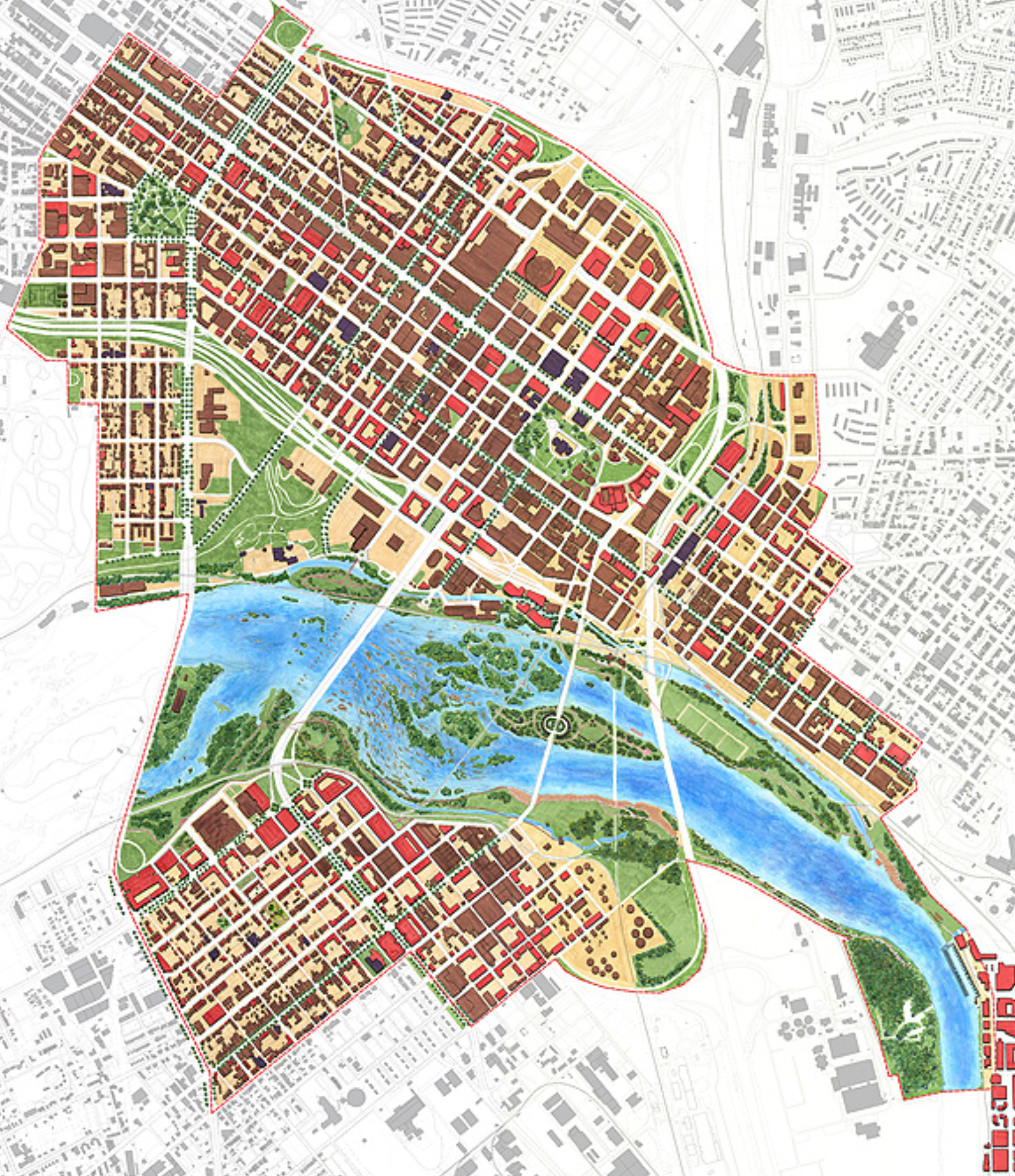Victor Dover, president of Dover, Kohl & Partners Town Planning, was recognized for innovation in sustainable urban planning at an awards ceremony that was part of the Smart City Expo in downtown Miami.
Big RAISE grants for our clients in Lake Wales and Siloam Springs
Siloam Springs and Lake Wales each received significant RAISE grants from the federal Department of Transportation.
Good planning brings return on investment in a number of ways. But one of them is this: Having a coherent plan can move your infrastructure project to the front of the line for funding. This month, the federal Department of Transportation awarded nearly two billion dollars for several projects through the Rebuilding American Infrastructure with Sustainability and Equity (RAISE) discretionary grant program to invest in improving and repairing critical transportation infrastructure and increasing levels of private sector investment.
Two Major Awards for Kingston Code
In 2023, city leaders in Kingston, New York unanimously voted to replace their 1960s-era zoning with a new, citywide, form-based-code. Dover, Kohl & Partners led the Kingston Forward initiative, devising the new code in an interactive public process. This month Kingston’s bold undertaking was recognized with two major planning awards.
Charter Award
The Congress for the New Urbanism honored the Kingston code at the CNU 32 Charter Awards ceremony in Cincinnati. The Charter Awards are considered the highest honor in urban design. Project director Amy Groves, a Dover, Kohl & Partners principal who has been with the firm since 2002, said, "Kingston is using code reform to help meet City goals for increasing housing options, building sustainably, and preserving its historic core. It is a great example for cities across the country."
Kingston is an extraordinary, historic place, deserving of the best design and thoughtful development.
CNU wrote: “For the 24th year, CNU's Charter Awards recognized outstanding achievements in architectural, landscape, and urban design and planning worldwide. Regarded as the preeminent award for excellence in urban design, the CNU Charter Awards honor a select number of winners. Winning projects represent major contributions to building more equitable, sustainable, connected, healthy, and prosperous communities.”
Dover, Kohl & Partners was joined in the Kingston Forward effort by Laberge Group, who spearheaded the GEIS; the Pace University Land Use Law Center, who helped integrate the code into Kingston’s legal system; Hall Planning & Engineering, who supervised the multimodal street design standards; and Gridics, who implemented an innovative online code platform.
Kingston’s new code was the result of an extensive, interactive public process.
Form-based codes have been recognized as one of the “25 Great Ideas of the New Urbanism.” Victor Dover and Joseph Kohl were among the founders of the Form-Based Codes Institute (FBCI). Victor, Joe, Amy and others from DK&P have served as FBCI faculty. Robert Steuteville commented, “Kingston Forward takes the art and communication of a form-based code to a new level.”
The new code is tied to a street-based, transect-based plan for the city, enabling new development to fit the historic pattern without needless variances. The code legalized mixed use and “gently denser” development, repealed minimum parking requirements, legalized accessory dwellings citywide, and lowered the barriers to affordability.
Conference of Mayors Achievement Award
In May, Kingston Forward was also selected for the 2024 Local Government Achievement Award given by the New York State Conference of Mayors. “This community-led initiative will really change how and where new development is created in Kingston, and we believe this is much more equitable and sustainable,” said Mayor Steven Noble. “We are already starting to see new projects that create much-needed housing, especially the crucial ʻmissing middle,ʼ and affordable development.”
Charrette sketch showing how to repair the effects of 1960s “urban renewal” projects and restore the form of the town
Olmsted Network shines national spotlight on "Lake Wales Envisioned"
Last year, Lake Wales scored two headlines on the same day: One lauded LW for reconnecting to its Olmsted roots (for the #LakeWalesConnected downtown plan). The other screamed that "one of the most imperiled Olmsted legacy landscapes faces new threats" (from ill-conceived sprawl). The followup #LakeWalesEnvisioned initiative is about getting the city’s big picture for future growth (and its form) back on track. Yesterday, I got to introduce #LakeWalesEnvisioned to the national audience of the Olmsted Network as part of their "Conversations with Olmsted" series! My short presentation begins at about 9:00 min in the video. —Victor
Downtown: Shared by All (TPS Ep. 6)
Episode 6 of “Town Planning Stuff Everyone Needs to Know” is about downtowns, and it posts 5/18/2020 on our YouTube channel.
Have you ever stopped to think about which neighborhood is the most important one in your city?
The thing about a downtown is, it’s everybody’s. No matter where you live in a town, if your town’s downtown neighborhood is doing well you probably have a sense of shared ownership and pride in that place.
When a town grows to the size of several adjoining neighborhoods, it will start to need (and deserve) some things that most individual neighborhoods can’t support all by themselves, like a larger central gathering place, or a Main Street, and seats for the most important shared civic institutions, like City Hall. In healthy cities these are almost always found among workplaces and housing and lodging and places to shop and eat in the downtown neighborhood or center.
When they’re allowed to, downtowns naturally evolve to become mixed-use, mixed-income, multi-modal precincts. Jane Jacobs put it this way:
“The [downtown], and indeed as many of its internal parts as possible, must serve more than one primary function; preferably more than two. These must insure the presence of people who go outdoors on different schedules and are in the place for different purposes, but who are able to use many facilities in common.”
“The Need for Mixed Primary Uses,” from The Death and Life of Great American Cities
Variety, planned on purpose, like you mean it
The wide variety in neighborhoods and building types within the core of a traditional city ultimately provides opportunities for people of all ages, backgrounds, cultures and income levels to live and work together. In contrast to suburban development, which generally offers only the single-family detached home, traditional cities offer a range of housing options, including single-family homes on smaller lots, rowhouses, garden apartments, the loft conversions that are transforming many former industrial districts, and, in some cases, midrise and highrise options for the people Frank Lloyd Wright once called “cliff dwellers.” Each of these housing types is located within mixed-use blocks, allowing for residents to meet their daily needs and conveniences in a dynamic urban neighborhood. As centers of commerce and trade, downtowns also provide an incredible variety of employment opportunities. With a city’s commercial and residential life follows cultural facilities and retail establishments. Young professionals, CEOs, students, doctors, government officials, shopkeepers, retirees, and families alike can all find their place in the heart of the city, due to the incredible diversity of jobs, housing types, cultural amenities, and (hopefully) varied means of transportation. This incredible range of land uses, housing types, employment, and income levels within a traditional urban fabric provides the freedom of choice, a privilege not afforded to residents of mono-functional suburbs.
Renaissance underway (but there is a catch)
Downtowns, even the ones that fell into decline 40 or 50 years ago, are naturally set up to once again become places where people want to be. But they need tender loving care. You must not force suburban zoning or parking requirements or street designs on your downtown, and if that’s happened already, your city is not alone, but it can join the ranks of the cities that have begun reversing the process.
The good news is, Americans have rediscovered their downtowns, in small villages, medium-sized towns, and big cities. According to Walkable Urbanism author Christopher Leinberger, half our downtowns are already revitalizing, and the other half soon will be. Your downtown is the most important neighborhood in your city, shared by all. And that’s #6 on my list of the Town Planning Stuff Everyone Should Know.
For more information, subscribe to the Dover Kohl YouTube channel, and also read up on the Main Street program of the National Trust for Historic Preservation. —Victor
P.S. Next week: Episode 7, Mixed Land Uses
"Connect the Dots" virtual lecture draws huge audience
On May 4, 2020, Victor Dover delivered a “virtual lecture” for the Civic Conversations series, hosted by the Pensacola News-Journal and the Studer Community Institute. Quint Studer introduced Victor as “the Michael Jordan of urban planning” at the start of this extraordinary event, streamed live for an estimated 6000 viewers. The talk features an in-depth discussion of what makes housing expensive, and what to do about it, including how the costs of housing and transportation must be considered as a composite number, and examples of innovation from around the United States. The event concluded with a live Zoom Q&A moderated by Lisa Nellessen-Savage, executive editor of the PNJ.





